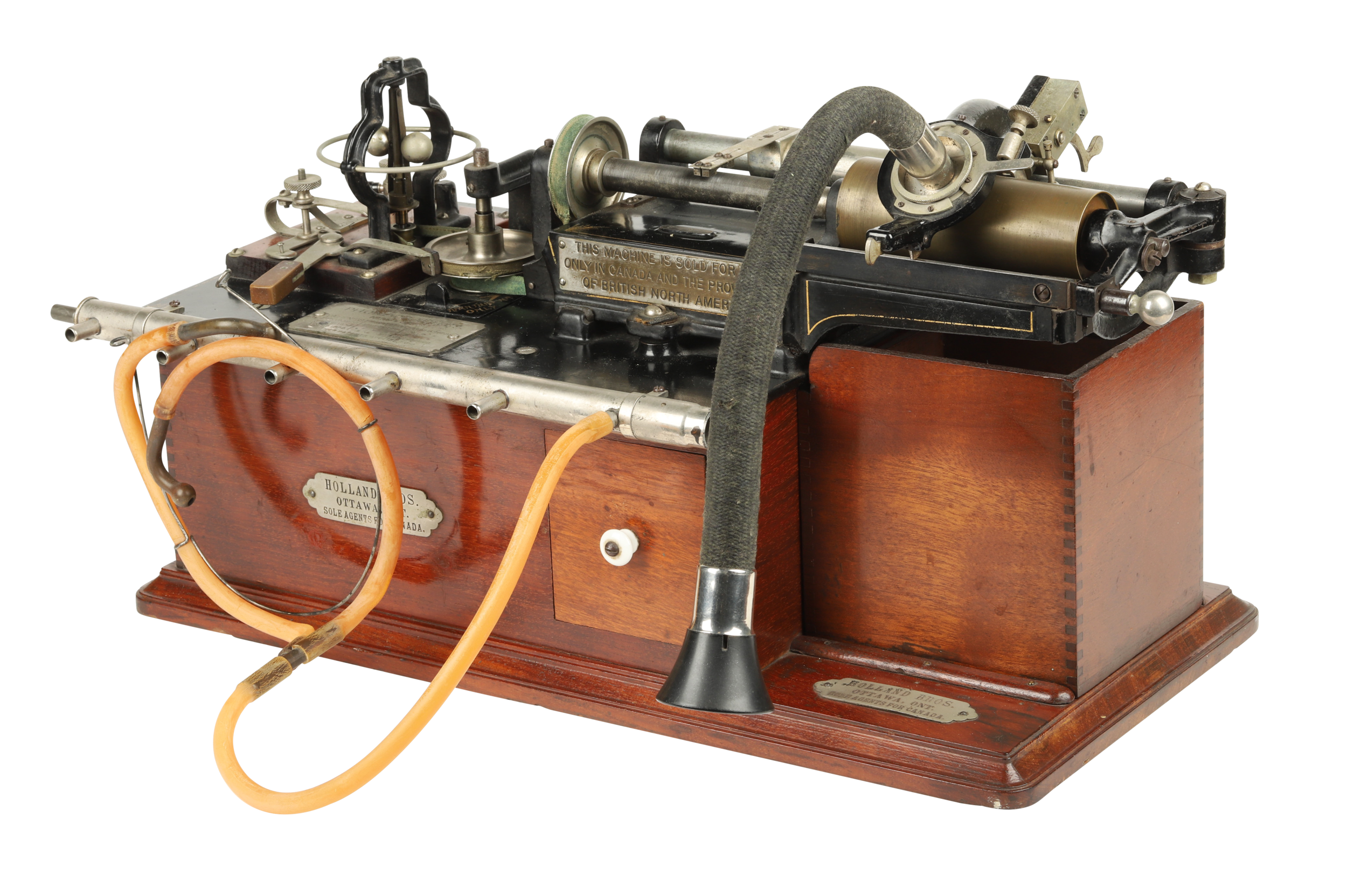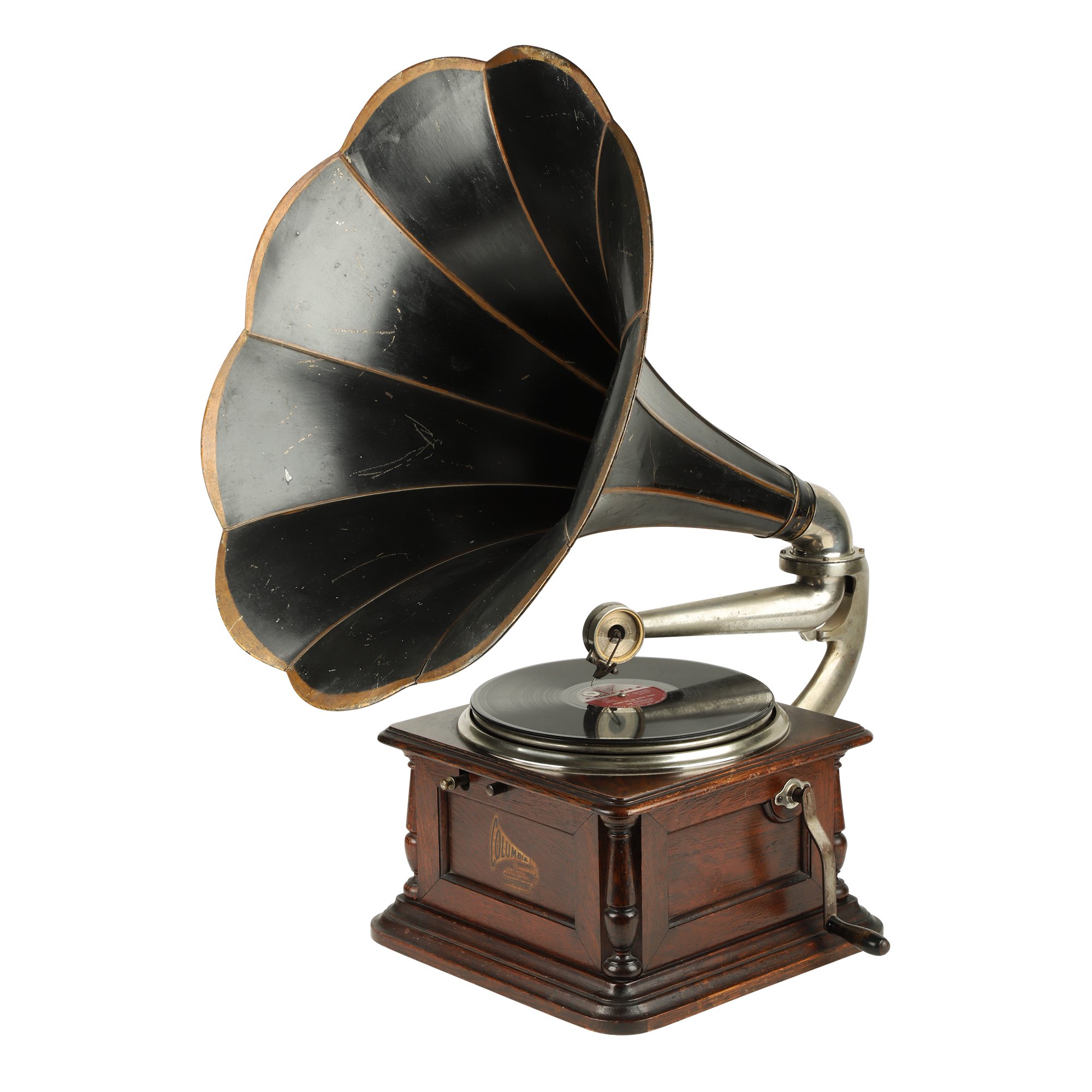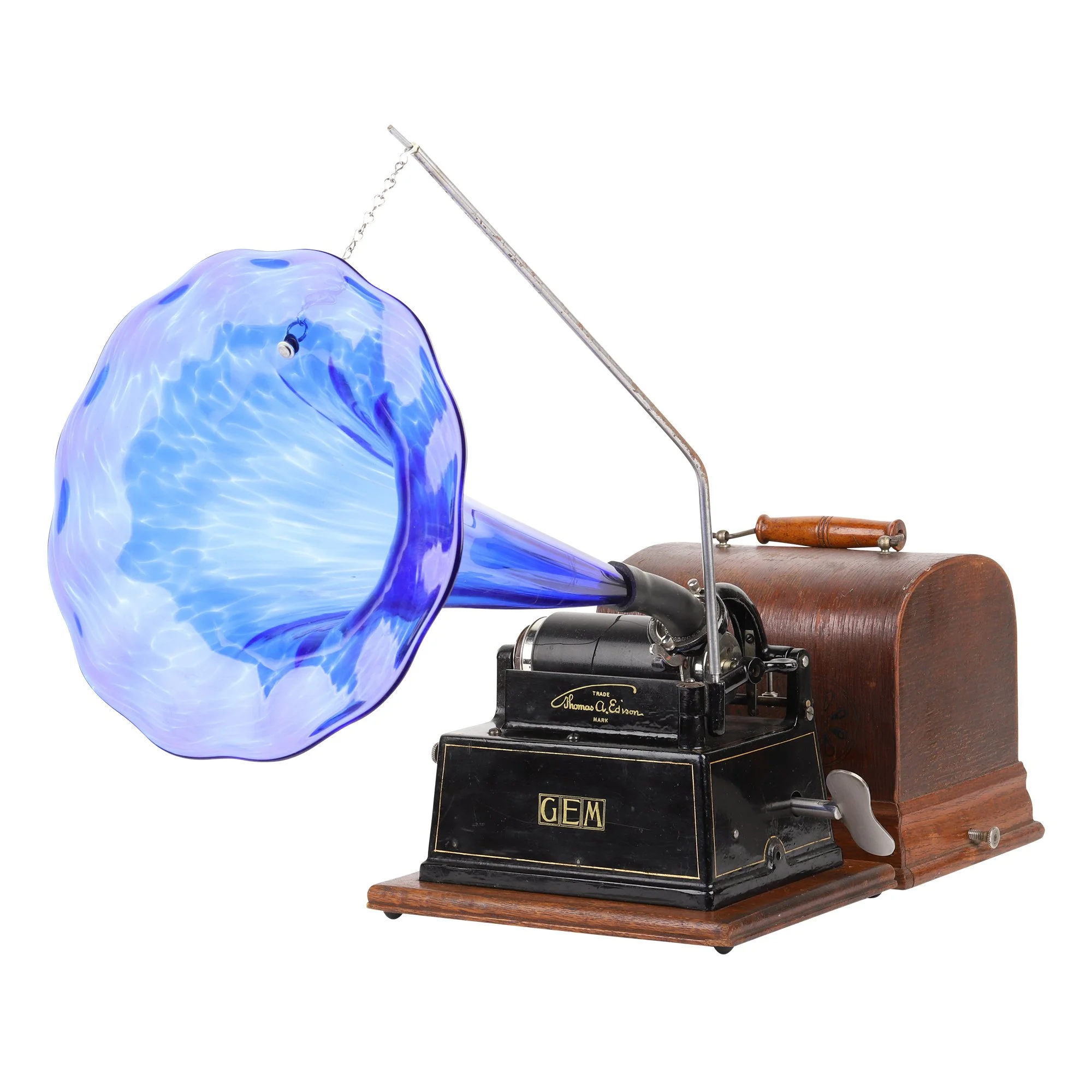Antique phonographs, music machines and records from two renowned collectors
From the strange and quirky to the exotic and magnificent
Miller & Miller’s March 19th sale of Music Machines, Toys & Advertising features an impressive selection of antique phonographs, music machines, and records.
As I listen to my favourite music through my new Bluetooth earphones, I marvel at the lush, rich tone, a far cry from the faint scratchy noise that Thomas Edison heard when he first recorded and played back the sound of his voice in 1877. He thought his invention would be best suited to business dictation, but by the end of the century it was clear that recorded music for home entertainment would be the driving force that launched the golden era of the phonograph. From about 1900 to 1920 manufacturers Edison, Columbia and Victor dominated the North American market with phonographs to suit every budget, their main goal being to generate a never-ending income stream from the sale of their cylinder and disc records.
Those early phonographs, a term that also embraces “gramophones” and “record players”, were quite robust, so it’s not surprising to find that many have survived to this day. The spirit of intense competition among the phonograph makers during those golden years drove improvements in technology, as well as style and fashion. That’s part of what has made antique phonographs so appealing to later generations. In fact, it was in the late 1960s when a few people in the Greater Toronto Area connected and started to meet at each other’s homes to discuss repair methods, swap spare parts and play some old records. In 1970, they decided to form a club that evolved to become the Canadian Antique Phonograph Society (CAPS) which is still going strong today.
Among the founding members of CAPS was John Peel, a native of Port Hope and a skillful, mechanically-minded man, known for his generous help with advice and repairs. John remained a CAPS member until he passed away at the age of 95. He had amassed quite a collection of interesting and desirable phonographs over the years and these were the envy of many a fellow collector. Now the time has come for this fabulous collection to be dispersed among the next generation, who will now be able to enjoy John’s wonderful music machines. They will be featured in the Miller & Miller “Music Machines, Toys & Advertising” online auction on March 19th.
But wait, as they say, there’s more. Sadly, another long-time CAPS member, Horst Weggler, of Oshawa, passed away too. Horst’s interest in phonographs goes back a long way and he had also amassed a large collection, including some quite rare and special examples, as well as many cylinder records. So the inclusion of Horst’s collection at the March 19th auction will double the number of phonographs, records and related items to over 260 lots up for bidding.
Opportunities such as this are rare because this auction offers something for everyone. Experienced collectors can feast on the more unusual and exotic phonographs to add variety to their collections, nab the spare part they’ve been seeking, or add a cabinet to house their records. For the curious and newcomers to the world of antique recorded sound, this is a great chance to pick up a disc or cylinder phonograph that will be a source of fascination for family and friends as they marvel at how they work, while enjoying the sound of hot jazz, vaudeville and opera pouring forth from the horn while the record spins.
In fact, that’s what makes antique phonographs so interesting for some. They don’t just sit there and look pretty; they beg for engagement and for the exercising of their moving parts to make music and song for our enjoyment.
Among the highlights in this auction are the items illustrated in this article, such as an early Edison Class M Cylinder Phonograph, the star of John Peel’s collection. Any visitor to his home showing a genuine interest in the phonographs on display would be taken upstairs for the grand finale to ‘ooh and ah’ at this magnificent machine, alone in a room of its own.
Other highlights shown here include an Amet Echophone, a phonograph so typical of Horst Weggler’s interest in the strange and quirky, the rare Pink Lambert cylinder record being another example. More down-to-earth phonographs from John Peel’s collection include a Columbia BI Sterling disc phonograph - just a lovely all-original machine. Horst’s Edison Gem cylinder phonograph would also be regarded as down-to-earth, until we see its stunning and rare blue glass horn that shifts it into the realm of exotic. The Canadian-made Vitaphone 28-disc phonograph is pretty exotic too and is featured in this auction among several Vitaphones that both John and Horst had managed to acquire.
Back on earth again we see John’s Edison Standard A cylinder phonograph, often called the “Suitcase” or “Square Top” model as he once explained at a CAPS “Show and Tell” presentation. The last item displayed here is a selection of John’s brown Canadian Berliner records. Why brown? That’s a bit of a mystery. Maybe just to be different, or perhaps there was a technical benefit.
In addition to many American, Canadian and European phonographs, this auction includes organettes, music boxes, horns, books, needle tins, rare records, phonograph parts and more. All are available for viewing and online bidding at Miller & Miller Auctions.
Some of these, including an Edison Opera and the very strange Psycho-Phone, are previewed in Miller & Miller’s YouTube channel .
Story by Mike Bryan
Past President
Canadian Antique Phonograph Society
Auction Details:
Music Machines, Toys & Advertising
March 19, 2022
Did you enjoy this story? Feel free to share it using the buttons below:









